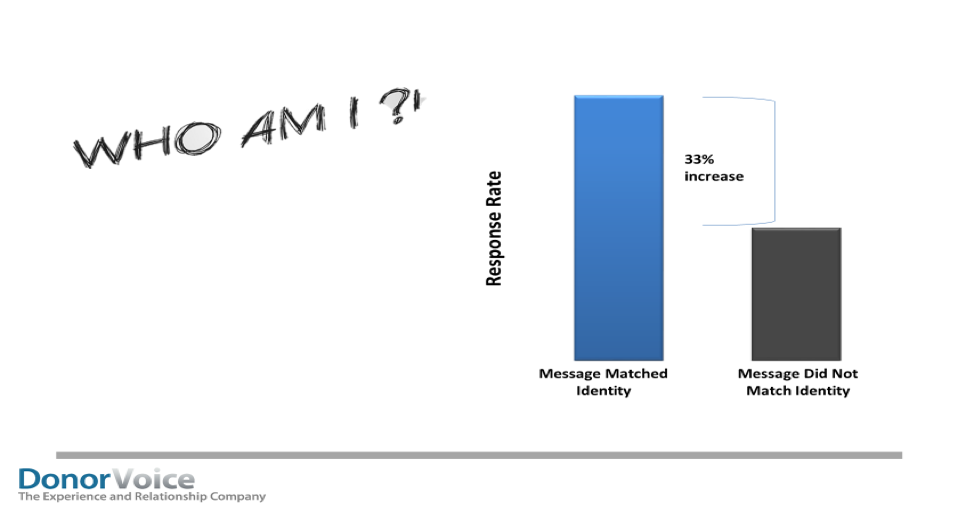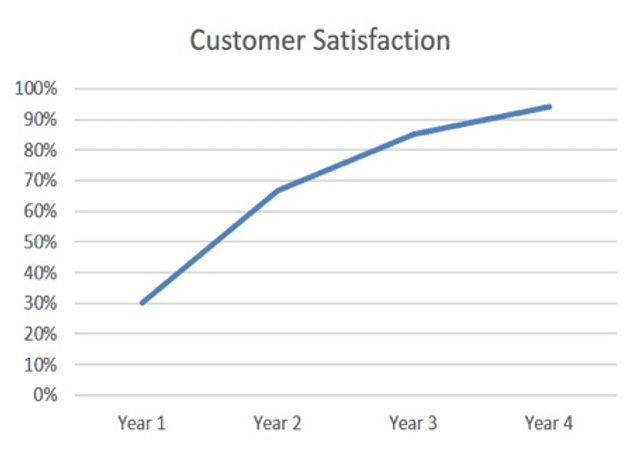What are the three missing pieces of data standing between our sector and success?
In this blog post connected to the Commission on the Donor Experience Project 3 Satisfaction and Commitment, Charlie Hulme sets out two facts that could be the difference between the fundraising sector prospering or disappearing altogether.
- Written by
- Charlie Hulme
- Added
- June 07, 2017
Every charity in the UK is facing two facts. One represents the end of fundraising as we know it. The other a new, and radically more successful approach.
1. A year from now, file sizes are going to shrink. The Fundraising Preference Services showcase of charities who got a head start on supporter consent makes for sobering reading. So far, best case scenario is a loss of 50% of your file, with 85% as worst case. This imminent reality makes the previous decades of rising costs and attrition, coupled with low to no net growth look like the good old days! So that’s the bad news!
2. The good news is there are only three missing pieces of data standing between our sector and its ability to generate more support (giving and/or doing) and doing more good. For starters, uncovering and acting on them are your key to avoiding the catastrophe of point number one. (Seriously, no one should be going into 2018 writing off half their file!)
Forward thinking charities who’ve uncovered and acted on this data have transformed supporter experience and value. During the most difficult time to be a fundraiser they’ve seen results no charity has ever remotely got under the very best of circumstances. For example:
- Halved attrition
- Increased revenue per donor 70%
- Increased conversion 15%
- Increased average value £10
So, I should probably tell you what the three missing pieces are, right?
1. Supporter commitment
2. Supporter identity
3. Supporter experience
At first glance these may seem familiar. Maybe even obvious. Perhaps as you read you’re thinking 'yeah, we do that'. Hopefully you do. Certainly, if your results are as good, or better, than those shared then you definitely do. If they’re not, you’re not. If that’s the case the mindset if great, but the execution is incomplete.
All the well-intentioned talk of ‘engagement’, ‘emotion’, ‘story-telling’ and the ‘donor-journey’ etc. has always been emasculated by a data-set that made them impossible to deliver. All we’ve ever known is who gave (as defined by meaningless demographics), how they gave (as defined by the irrelevance of channel), when they gave, how much they gave and how often (as defined by RFV which tell us what they did, not what they’ll do). We’ve never been able to answer the two most important questions:
1. Why do they support you?
2. Why did they stop?
Instead we’ve been fobbed off with meaningless metrics like ‘measure satisfaction’ and fluffy insight like ‘people give because we asked them/because it feels good’ etc. These are as true as they are useless. What can we do with them other than continue to ask with ever more annoying frequency? And not only do they force you to have to guess as to what causes the good feeling, but also to presume the answer is a one size fits all.
No other sector has been so ill served by good intentions, empty rhetoric and a lack of scientific rigor. So, the following is an evidence based attempt at a brief guide of what you should be demanding.
Supporter commitment
Definition: an accurate measure of relationship strength (i.e. intent to stick around), and data driven insight into what causes it.
Capturing commitment at point of sign up should be as important to you as capturing bank details. Why? Because it accurately lets you know who will stay or go in the first 30, 60, 90, 365 days.
And this measurement of commitment warrants a very different follow up or ‘journey’.
In the example below, the test hypothesis is that the Commitment level (DonorVoice proprietary measure of loyalty) of the donor dictates how much content is warranted. More (but not too much) content helps lower Commitment donors – the last two sets of 3 bars – increase their sense of reliability, personal connection and trust in the brand. This improves retention; 12 points in this case.
Higher Commitment donors (the 2ndset of 3 bars) already have a good sense of reliability, personal connection and trust. They don’t need to be sold (a.k.a. ‘engaged’) again, and again, and again... In fact, the additional content makes them feel:
a) you don’t know them and
b) that their money is being unnecessarily wasted
The tragic result is lowering the retention of supporters who had highest commitment!

But measuring commitment doesn’t just give you a better answer on ‘who’, but also ‘what’.
Uncovering the relationship data you don’t have, and combining it with the transactional you do, let’s you build a cause and effect picture of what is driving or damaging commitment.
For example, can you say, with 100% accuracy what’s the value of a supporter receiving your magazine, opening the e-news, contacting supporter services, or any of the many, many other interactions s/he has with your organization?
Make no mistake they all create an impression, and that impression determines what they’ll do next. Measuring and managing that impression is the only scientific way to make changes to your journey; it takes all the guesswork out of planning. From this point on all decisions are made based on data driven fact.
Supporter identity
Definition: an accurate answer on why they chose you.
Identity seems so intuitive, so obvious. But, again, if anyone had an empirical answer their results would look very different than they do. In the image below you see test/control results -in one condition identity was known, in the other it wasn’t. Where it was, and was reflected in messaging, response was up over a third!

All of us have multiple identities. Amongst others I’m a father, a fundraiser, a Frank Sinatra fan, a vegan and a Londoner. You could easily conduct a survey to find this out. What you couldn’t do is say if any of these identities activated my decision to give. They’re all descriptive, but which, if any, are causal of my decision to support you?
Even in seemingly simplistic cases (say a health charity uncovering who does/doesn’t have a personal connection with their cause) it’s far from simple. How often should you communicate with me? In what format/channels? About what?
Only by combining identity with commitment can you validate which identity matters rather than merely exists. And only by doing so can you get scientific answers as to how the journey needs to change per identity.
Supporter experience
Definition: accurate insight into what it’s like to support you
Differing identities, will have different experiences. Those experiences account for around 50% of their decision to stay or go. In other words, they’re pretty important!
If two supporters say yes to your face to face fundraiser, but one had a good experience, the other a bad one, should they get the identical journey? No, but they do. Or, if two supporters receive a copy of your magazine, but one finds what they’re looking for but the other doesn’t, should they get the identical journey. No, but they do.
It’s not enough to know we need to ask for feedback. We need to know how to do it, when and where. Anyone can ask a question (e.g. “will you vote Brexit/Trump?”). But you need to be very sure you’re getting accurate, actionable answers. Otherwise it’s as useless as the current vogue for measuring supporter satisfaction in a vacuum.
Consider the example on the left, from the for-profit sector. They followed the best practice we’re encouraged to follow and measured customer satisfaction year over year and got the graph you see below.
Management thought this was outstanding, a clear indication of business health.
Trouble was they went bankrupt!
Getting accurate supporter insight into their true experience with you (what’s happening, what’s working/not working, what changes need to be made etc.) is the silver bullet to changing your process, your delivery, their new experience and your new results. It’s how one charity halved F2F attrition, how another improved online donations by 20 percentage points, and how another increased revenue per donor in a yearlong mail program by 70%.
Conclusion
There’s one last fact every fundraiser should take into account. The sector itself, as formally constituted, is in danger of extinction at its own hand. Other ways to express concern and generosity are, on a percentage basis, seeing tremendous growth (e.g. direct to beneficiary, social bonds, and various other forms of cutting out middle man). Meanwhile we raise more or less the same amount of money, from the same amount of people. And we do it using more or less the same techniques we always have. Sure the channels change, but the mindset with which we use them remains the same.
If we want to avoid irrelevance and extinction we need to accept we don’t have a God given right to exist and to people’s generosity. If we’re to win their respect, admiration and trust we’re going to have to show them the same. We can start by seeking and acting on supporter commitment, identity and experience as the practical actions that lead to a permanent change for the better. Or we can adhere to ‘best’ practices that have only made things worse.
Fundraising was hard long before the summer of 2015. And from summer 2018 it’s going to be a lot harder. But it doesn’t have to be. Actually, it can be a lot easier. From now on it’s a choice.


















